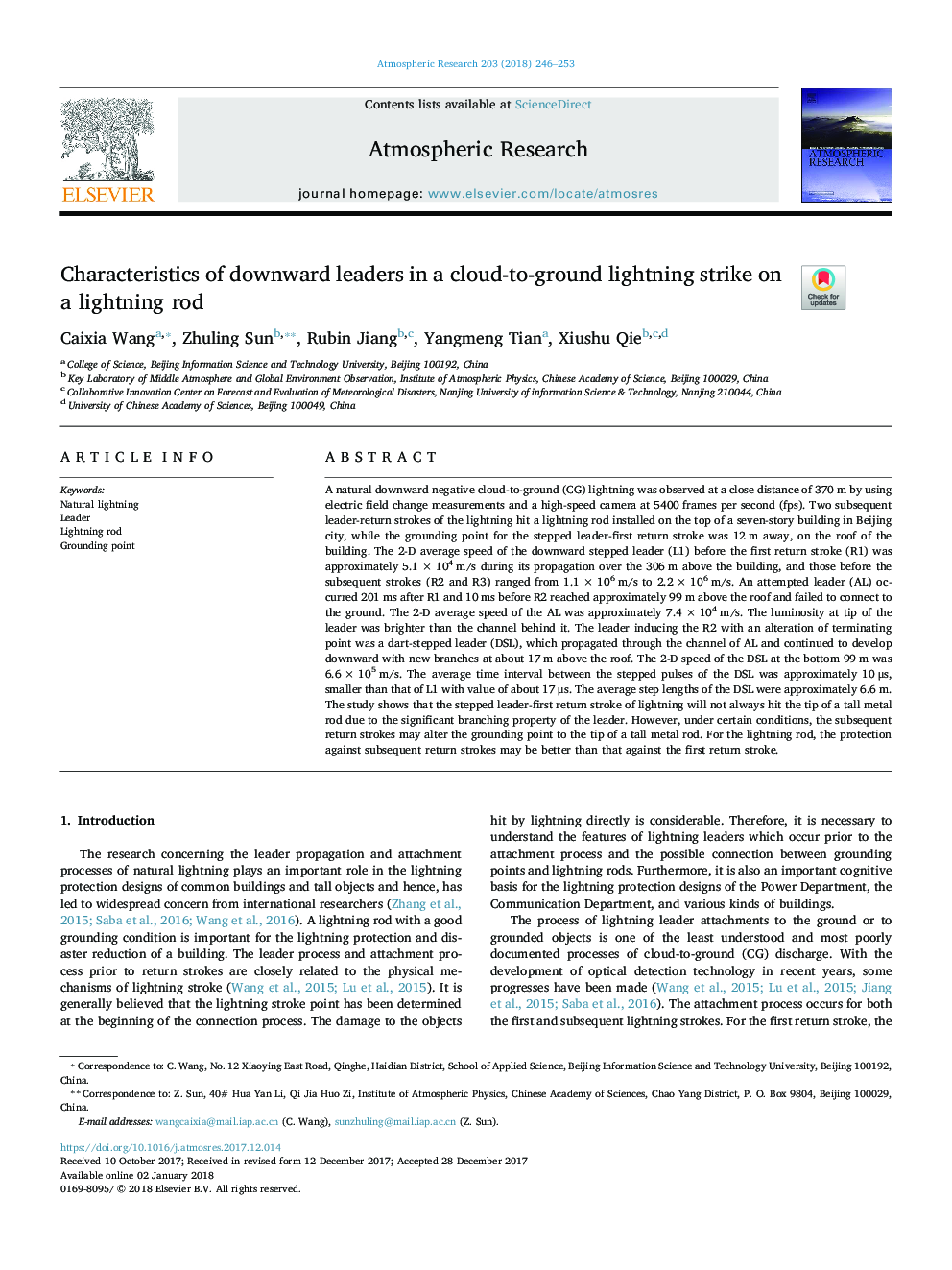| کد مقاله | کد نشریه | سال انتشار | مقاله انگلیسی | نسخه تمام متن |
|---|---|---|---|---|
| 8864775 | 1620478 | 2018 | 8 صفحه PDF | دانلود رایگان |
عنوان انگلیسی مقاله ISI
Characteristics of downward leaders in a cloud-to-ground lightning strike on a lightning rod
ترجمه فارسی عنوان
ویژگی های رهبران پایین در یک اعتصاب رعد و برق به زمین در یک رعد و برق
دانلود مقاله + سفارش ترجمه
دانلود مقاله ISI انگلیسی
رایگان برای ایرانیان
کلمات کلیدی
رعد و برق طبیعی، رهبر، میله برق گیر، نقطه پایه،
موضوعات مرتبط
مهندسی و علوم پایه
علوم زمین و سیارات
علم هواشناسی
چکیده انگلیسی
A natural downward negative cloud-to-ground (CG) lightning was observed at a close distance of 370 m by using electric field change measurements and a high-speed camera at 5400 frames per second (fps). Two subsequent leader-return strokes of the lightning hit a lightning rod installed on the top of a seven-story building in Beijing city, while the grounding point for the stepped leader-first return stroke was 12 m away, on the roof of the building. The 2-D average speed of the downward stepped leader (L1) before the first return stroke (R1) was approximately 5.1 Ã 104 m/s during its propagation over the 306 m above the building, and those before the subsequent strokes (R2 and R3) ranged from 1.1 Ã 106 m/s to 2.2 Ã 106 m/s. An attempted leader (AL) occurred 201 ms after R1 and 10 ms before R2 reached approximately 99 m above the roof and failed to connect to the ground. The 2-D average speed of the AL was approximately 7.4 Ã 104 m/s. The luminosity at tip of the leader was brighter than the channel behind it. The leader inducing the R2 with an alteration of terminating point was a dart-stepped leader (DSL), which propagated through the channel of AL and continued to develop downward with new branches at about 17 m above the roof. The 2-D speed of the DSL at the bottom 99 m was 6.6 Ã 105 m/s. The average time interval between the stepped pulses of the DSL was approximately 10 μs, smaller than that of L1 with value of about 17 μs. The average step lengths of the DSL were approximately 6.6 m. The study shows that the stepped leader-first return stroke of lightning will not always hit the tip of a tall metal rod due to the significant branching property of the leader. However, under certain conditions, the subsequent return strokes may alter the grounding point to the tip of a tall metal rod. For the lightning rod, the protection against subsequent return strokes may be better than that against the first return stroke.
ناشر
Database: Elsevier - ScienceDirect (ساینس دایرکت)
Journal: Atmospheric Research - Volume 203, 1 May 2018, Pages 246-253
Journal: Atmospheric Research - Volume 203, 1 May 2018, Pages 246-253
نویسندگان
Caixia Wang, Zhuling Sun, Rubin Jiang, Yangmeng Tian, Xiushu Qie,
